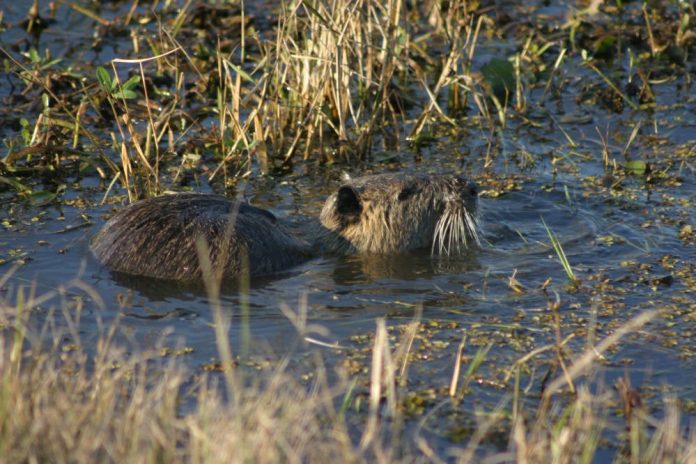A two-foot-long rodent, which most resembles a beaver and muskrat, is wreaking havoc in Californian wetlands. Nutria — introduced to the U.S. from South America in 1899 — are a highly destructive animal, whose deep burrows have been known to take down levees and dams and decimate vegetation.
The Mendota Wildlife Refuge, known for its legendary duck hunting in the San Joaquin Valley, is a recent victim of this rodent’s invasion. Greg Gerstenberg, former head of the nutria eradication project for California State Fish and Wildlife, told MKJNOW that officials “pulled about 220” nutria out of the refuge in about four weeks last year.
According to the California Department of Fish and Wildlife, Nutria can consume up to a quarter of their body weight in plant material in a day and the rodents “do not construct dens, they burrow, frequently causing water-retention or flood control levees to breach, weakening structural foundations, and eroding banks.”
Nutria were first detected in central California in 2017. There are established populations of nutria in every continent except Antarctica and Australia, and established invasive populations can be found around the U.S. There is a year-round open season on Nutria in Oregon, a bounty for Nutria in Louisiana (which has paid out more than $30 million for over 6 million kills), and the rodent has even made the Texas “most unwanted” species list.
In California, the rodent has been hard to control, since private land often harbors populations. “You can clean five miles of river, and if you have one parcel that has a pond on it, and you don’t have access to it, they can just keep coming and re-infect that area,” explained Gerstenberg.
Officials in California are looking to Maryland, which eradicated its last nutria in 2015 from the Chesapeake Bay region, for guidance. The Chesapeake Bay Nutria Eradication Project (CBNEP) removed over 14,000 nutria between 2000 and 2015. The state only recently announced that the state is free of the pest. The project lasted over 20 years.
Read Next: Colombia Struggles to Control Exploding Population of Over 100 Invasive Hippos
During the nutria’s time in Maryland, 5,000 critical acres of wetlands were lost in part to nutria impacts. The wetlands there, like those in California, provide critical ecosystem functions and habitat for waterfowl.
California’s eradication efforts are underway. The interagency Nutria Response Team is busy mapping nutria populations and making plans for cross-departmental collaborations. Where the current population stands, the state believes that “eradication is feasible with rapid response.”








